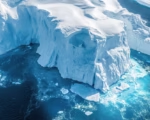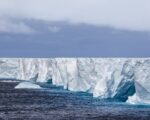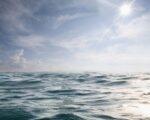Greenland’s rapidly melting glaciers have revealed an astounding 1,620 kilometers of previously ice-covered coastline over the past two decades. As Arctic marine-terminating glaciers continue to retreat, satellite imagery from 2000 to 2020 has documented this significant shift, showcasing the broader impacts of global warming on the region’s geography. These changes not only highlight the shrinking ice flows but also bring forth newly exposed land that is now open to environmental shifts. The newly uncovered areas are likely to face various ecological challenges, including shifts in local ecosystems and sediment movement, while simultaneously presenting opportunities for further scientific exploration.
A study published in Nature Climate Change examined satellite images to track the changes in glacier coverage across the northern hemisphere. The results showed that over the past 20 years, 2,466 kilometers of Arctic coastline have been revealed by glacial retreat, with Greenland accounting for approximately 66 percent of that total. One of the most striking examples of this phenomenon is the Zachariae Isstrom glacier, where 81 kilometers of coastline have been exposed, marking the most significant glacial retreat in the Arctic—twice the amount of any other glacier in the region.
In addition to the coastline, the melting glaciers have led to the discovery of new islands, some of which were previously hidden beneath the ice. The study found that 35 islands larger than 0.5 square kilometers have emerged as a result of the ice retreat, with 29 of these islands located in Greenland. Some of these newly uncovered islands have never been shown on any maps, raising concerns over potential territorial claims. As nations vie for control over these newly exposed lands, there are concerns about the rush to stake claims due to the region’s natural resources.
The emergence of these islands is not only a matter of political interest but also scientific curiosity. Researchers highlight the significant potential for studying the Arctic’s unique geology and marine ecosystems, with the newly exposed areas providing fresh insights into the region’s environmental history and biodiversity. These shifting landscapes offer an unprecedented opportunity for understanding the Arctic’s rapidly changing environment, but they also underscore the larger consequences of climate change on global ecosystems and geopolitical dynamics.


















